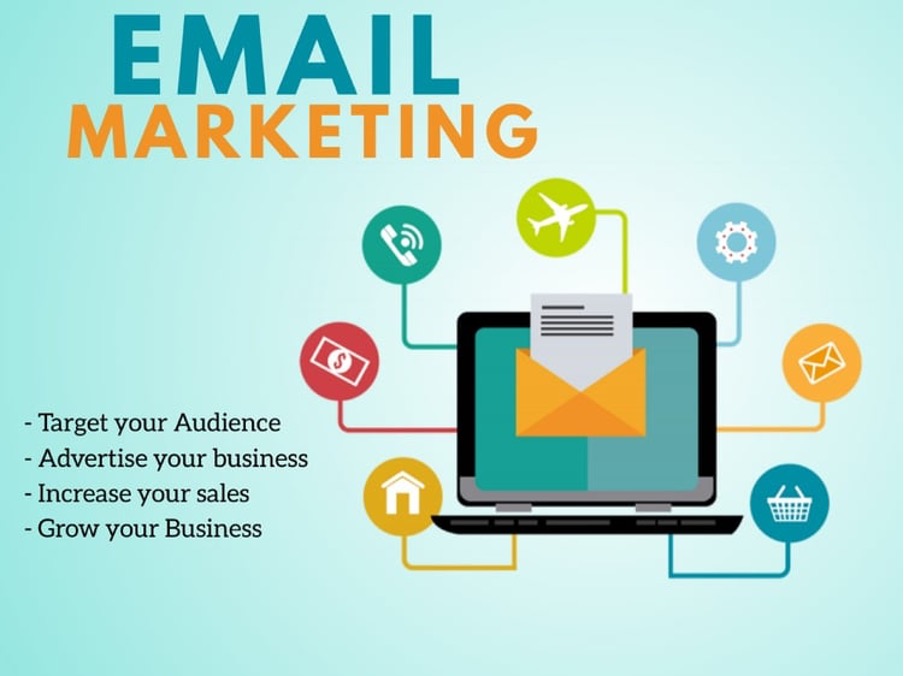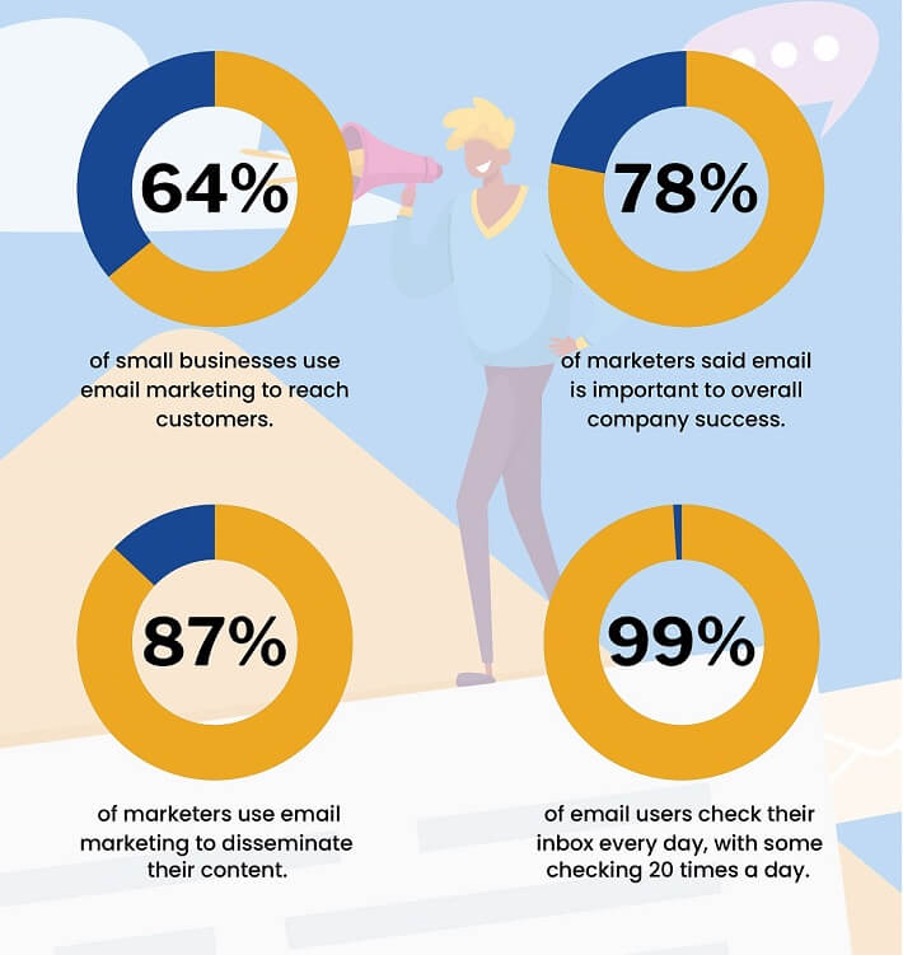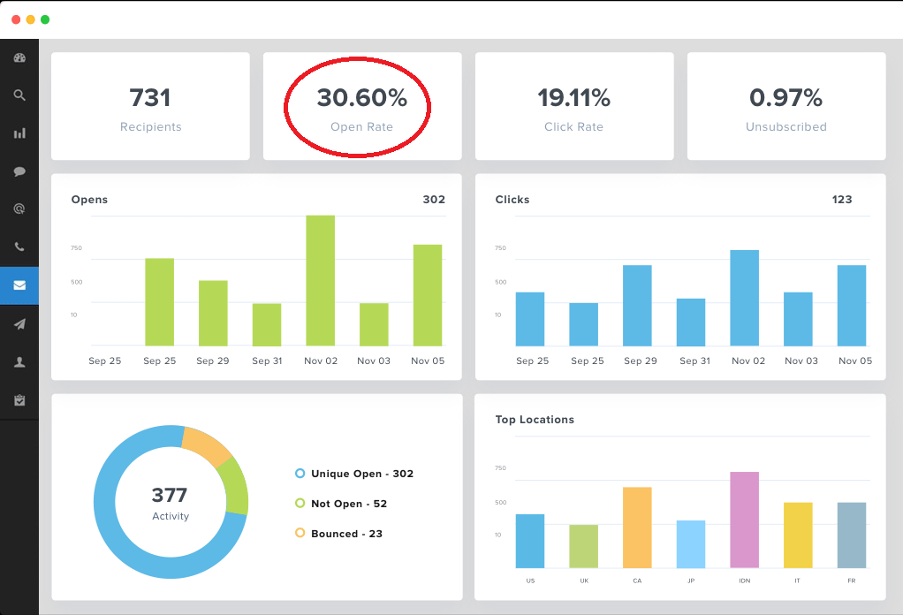It was back in 1978 when a business sent out its first marketing email to its client. This marketing email generated up to $13 million worth of sales and became the leading and most influential marketing practice. In its early days, it was not a favourable or most opted marketing approach; however, with time passing, it gained popularity once the businesses realized its potential and impact (Statista, 2023).
Sharing personal information and maintaining a consistent relationship with the customers back then was a challenge. Over the evolution of technology and digitization, the resistance has become low, with customers sharing their email information to stay updated with updates and promotions of their favourite brands. It is not easy to retrieve a customer’s personal information; however, if a business opts for the suitable medium and technique, then any business owner successfully builds a healthy customer database and maintains those customer relationships more effectively.
How does the technique of Email Marketing work?

Usage of Email marketing:
1. Formulating long-term healthy relationships with your customers
2. Raising brand awareness by explicitly targeting the correct set of customers
3. Sharing and creating distinctive content
4. Converting the potential leads into sales
5. Reward customers with special perks and benefits concerning their loyalty towards your brand.
Let us further dive and brief us through some facts and statistics about email marketing!
- As it is known, there are over 4 billion active email users, and EMAIL Marketing is one of the most effective ways of reaching these potential customers.
- About 80 percent of marketers list email marketing techniques as one of the most effective marketing techniques ( Holovach, 2023).
- It is found that the ROI from email marketing is significantly higher than that of other methods, which is $36 for every $1 spent on email marketing (Kirsch, 2022).
- For the B2B industry, 31 percent of marketers firmly believe email marketing is the best way to generate new leads.
- For the B2C industry, all marketers draft personalized emails for their contact lists after studying past purchases and send them direct emails daily.
Designing an effective email strategy
To design a well-constructed email strategy, the marketer must consider the following elements to make it more impactful:
- Exploring and analyzing your target audience– How a reader can relate and connect with the content shared in an email makes an email effective. The more the relevancy of the email, the higher the chances for the reader to get engaged.
- Designing a List of interested subscribers – To send newsletters and emails, the marketer requires a list of individuals who have consented to share their personal information with the brand. One way to extract the customers’ email addresses is through the website by signing up for the newsletters. Many brands offer a lucrative 10% discount if the visitor on the website signs up for the newsletter.
- Defining the buyer persona- It is essential to segregate the list of subscribers based on their behaviour, characteristics, interests, buying patterns, demographics, pain points or their challenges. This way, the content shared over email is more personalized and appropriate for the right consumer.
- Eye-catching and attention-seeking content- The content in the email must be clear, crisp, and directly targeted toward that reader. The content must have unique and engaging content with attractive attributes such as title, images, message, and call to action.
- Mobile-friendly content- You know how we are always on our phones and tablets nowadays, right? Well, that is why websites and pages need to be mobile-friendly. It is just way more convenient that way! Plus, with cloud computing, everything is super accessible. Hence, the emails must be rightly optimized for smartphones and portable gadgets so that the previewed content is original.
- Exploring Campaign Types- Based on the nature of the business, a marketer can use the most suitable campaign type for email marketing. It is not a leisurely sail to understand the most effective one, but one can always experiment and analyze a particular campaign and see how favourable the results are. If not, the marketer can decide whether to stick to weekly email campaigns, monthly newsletters or share updates via email about the latest advancements and promotions. This is more like a hit-and-trial approach, but the marketer must proceed with the most rewarding email marketing campaign.
Building an Email List
- Creating a sign-up form on your website: Making it easy for visitors to subscribe to your email list is essential. You can achieve this by including a sign-up form on your website, which can be placed in a prominent location, such as your homepage or a dedicated landing page.
- By offering a lead magnet: A lead magnet is a free reward, such as an e-book, whitepaper, or webinar, offered in exchange for a subscribed email address. One must ensure lead magnet is valuable and relevant to the audience.
- Hosting a giveaway or contest: Hosting a giveaway or contest can help a business attract new subscribers and engage the existing audience. The marketer must ensure the prize is relevant to the target audience to attract the right people based on their strong interests.
- Attending events and conferences: Attending events and conferences within the same industry can help a business meet new clients and grow its email list. He must ensure to collect email addresses from people who are interested in their business.
Email Marketing Analysis

Email marketing analysis measures how effective email marketing campaigns are and utilizes the data to further optimize future email marketing campaigns. Here are some key metrics to track when analyzing email marketing campaigns:
- Open rate: The open rate measures the percentage of people who opened the sent email. A high open rate indicates that your subject line was compelling, engaging, and relevant to your audience.
- Click-through rate (CTR): The click-through rate (CTR) is the percentage of people who click on a link in your email. A high CTR means your content was engaging and relevant to your audience.
- Conversion rate: The conversion rate is the percentage of people who perform a desired action, such as buying a product or completing a form, after clicking on a link in your email and visiting your website.
- Bounce rate: The bounce rate measures the percentage of undeliverable emails due to invalid email addresses or other issues.
- Unsubscribe rate: The unsubscribe rate measures the percentage of people who opted out of your email list after receiving your email.
- Revenue generated: Tracking the revenue generated from your email campaigns can help you understand the ROI of your email marketing efforts.
By using these metrics, the marketer can study how the email marketing campaigns have performed and can regularly track the effectiveness of these campaigns. He can adjust alongside the progress to obtain better and optimized results. By doing so, he ensures he is leading his campaigns as per the ongoing email marketing trends and techniques and leaves no room for error and mitigates the failure risk of the email marketing campaign. At last, the business succeeds in building up a vast network of people and relationships with their existing and potential new clients and keeping them well informed about the promotions, updates, and business progress. Sometimes, this email marketing technique is overshadowed by other compelling and attractive techniques; however, as stated above, it is vital for any marketer to realize its power and potential and must not miss out on this opportunity to build and grow their business stronger economically and effectively.
References
Holovach, H. (2023, March 15). Email Marketing Statistics. Retrieved from Snov: https://snov.io/blog/email-marketing-statistics/
Kirsch, K. (2022, November 30). Email Marketing stats. Retrieved from Hubspot: https://blog.hubspot.com/marketing/email-marketing-stats
Statista. (2023, April 30). Email Marketing. Retrieved from Statista: https://www.statista.com/topics/1446/e-mail-marketing/#editorsPicks

